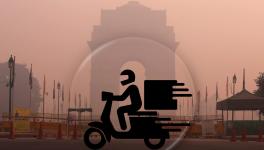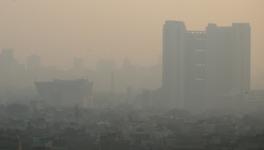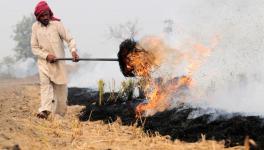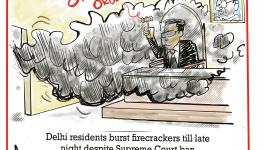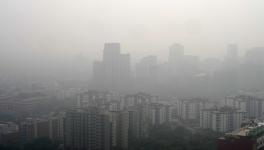The Air We Breathe Is Worse Than Ever, What Is The Indian Government Doing About It?
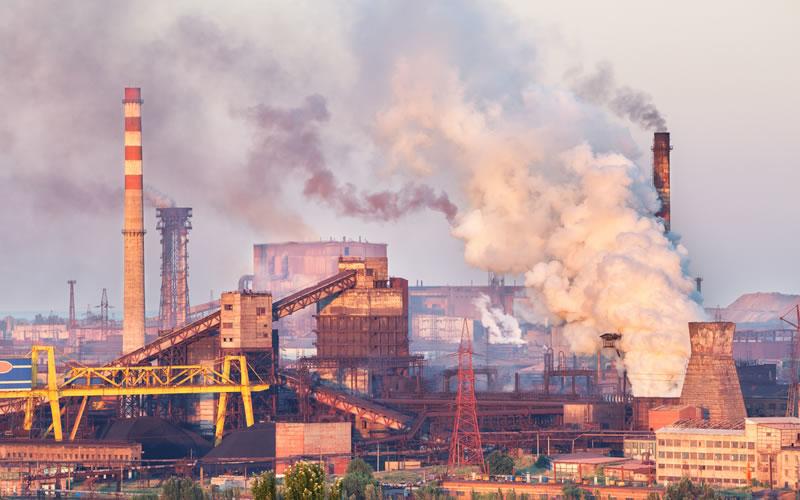
Image Courtesy: Greentumble
The air that we are breathing is highly polluted. The ambient air quality as well as household air quality are well below the alarming level, triggering a spate of diseases the world over.
The State of Global Air 2018 — a special report on global exposure to air pollution and its disease burden — was recently released.
The report covers the entire planet and maps the air quality for countries. It does not just provide valid data for ambient air quality but also for the household air pollution, mainly from the burn of solid fuels for cooking, heating, etc.
It is an established fact that air pollution can affect people’s health. There is a spate of non-communicable diseases that have air pollution as one of the biggest contributors. Asthma, breathing problems, and even cardio-vascular diseases are linked to the quality of air we breathe in.
The Global Burden of Disease (GBD) project of the Institute of Health Metrics and Evaluation (IHME) published a report saying that ambient air pollution has become one of the most important risk factors, contributing to deaths and disability in human beings.
The ambient air pollution (particulate matter less than or equal to 2.5 micrometres in diameter – PM2.5) now ranks as the 6th highest risk factor for early deaths in the world. Worldwide exposure to PM 2.5 contributed to 4.1 million deaths from heart disease and stroke, lung cancer, chronic lung disease and respiratory infection.
The GBD initiative has also documented how millions of people around the world are exposed to air pollution in their homes arising from the use of solid fuels (such as coal, wood and dung) for cooking and heating.
The household exposure to air pollution has a substantial impact on people’s lives. Household pollution is now ranked as the 8th highest risk factor for early deaths, with 2.6 million deaths attributable to it in 2016. The combined ambient air pollution and household air pollution have contributed to deaths of people in such large numbers worldwide.
However, the developing and poor countries face greater challenges.
The World Health Organisation (WHO) has set the air quality guidelines for annual average PM2.5 concentration — 10 μg/m3 based on evidence of health effects of long-term exposure to PM2.5. But the WHO acknowledged that it could not rule out health effects below that level either. However, this is considered to be an ambitious goal and hence, an interim target of lower concentrations has been set for different regions of the world.
The WHO suggested three interim targets set at progressively lower concentrations — 35 μg/m3, 25 μg/m3, and 15 μg/m3.
Based on the data available, however, 95% of the world’s population exceeds the WHO pollution guidelines for PM2.5. Nearly 58% of the population lived in areas that have more PM2.5 concentration than even the interim target.
The highest concentration of above 204 μg/m3 population-weighted annual average PM2.5 is in North Africa and Egypt, owing to wind-blown mineral dust. The next highest appears in South Asia, where combustion emissions from multiple sources like sold fuel use, coal fire power plants, agricultural and other open burning and industrial and transportation related sources are the main contributors. In Bangladesh, the annual average of PM2.5 is 78 μg/m3, in India and Pakistan it is 76 μg/m3, and in China it is 56 μg/m3.
The lowest, which is less than 8 μg/m3, is in Australia, Brunei, Canada and Estonia.
During the past six years, the air quality has further deteriorated on the planet. The PM2.5 concentrations have increased by 18%.
The trends of this increase are also quite interesting in the 10 most populated countries in the world. India, Bangladesh, Pakistan and China have all experienced both high concentrations of population and increasing trends in PM2.5 exposure, but there are noteworthy distinctions. China experienced substantial increases in population-weighted exposures before 2010 — reflecting in part the dramatic scale of economic development in recent decades — but the exposures since then have stabilized and even begun to decline, according to the GBD report. This is a substantial departure from the other South Asian countries that still have high concentration and pollution levels.
Pakistan, Bangladesh and India have experienced the steepest rise in air pollution levels since 2010, and now present the highest sustained PM2.5 concentrations among the countries.
The estimated combined toll from all forms of air pollution (PM2.5, ozone, and household) is substantial. On a global basis, total air pollution was responsible for 6.1 million deaths (11.2% of the global total). Of the number of global deaths in specific disease categories, 22.6% of ischemic heart disease deaths, 21.4% of stroke deaths, 23.5% of lung cancer deaths, 45.1% of deaths from acute LRIs, and 44.7% of COPD deaths were attributed to air pollution in 2016.
How is the Indian government responding?
The data from the GBD is startling. Among the most vulnerable regions in the world is South Asia, India tops with the largest number of polluted cities in the first 20 list. Given the situation, intervention on ambient and household air quality has to be of utmost priority. However, the approach of the Indian government has been to deal only with ambient air quality in the National Clean Air Programme (NCAP). To improve the household air is still a distant dream.
The NCAP has a goal of achieving ambient air quality standards at all locations in the country in a stipulated time. Three objectives have been set: i) to augment and evolve a proficient ambient air quality monitoring network across the country, ii) to have effective dissemination of the data to the public and timely measures for prevention and mitigation of air pollution through public participation, iii) to have a feasible management plan for prevention, control and abatement of air pollution.
The approach to achieve these objectives is collaborative, multi-scale and cross-sectoral between ministries, state governments and local bodies. The big question is who will eventually own the plan to clean up air in their cities. There have been historic lessons in India where disaster (mainly earthquakes, tsunami, floods, etc.) management plans have been made, but when it came to responding to the disasters, the first in line were hardly to be seen. There are even city disaster management plans but still the district disaster management authority supersede the cities. Thus, the entire structure remains in a state of limbo. Likewise, for the air pollution plan in the city, the responsibility as to who would be the effective implementor will be a serious concern. This is not being addressed in the plan. For example, a city decides that there should be focus on public transport and private transport should be regulated, dissuaded. In such a case, the call cannot be taken by the city government but by the transport department, which is under the control of some other hierarchy.
There is a rather normative approach while dealing with air pollution from the transport sector. The NCAP comments on an action plan to leapfrog from BS IV to BS VI emissions (under the Bharat Stage emission standards) to ensure that better standard vehicles with less pollution are targetted. But this is completely erroneous. Because even if the standards are improved and the volume of the vehicles jumps by three times, the pollution level will remain the same or perhaps worse. Hence, the approach must be to change the present system of transport and ensure that public transport is strengthened. This must be the key change for success that needs to be brought about.
The public transport with better buses (less polluting), metros, bicycles’ movement and pedestrianisation must be given an impetus. At the same time, the movement of individual car owners must be coerced to ensure that people are dissuaded from using their private cars. Unlike in Delhi, where during the high rise in pollution in the months from November to January, the metro fare was hiked, public transport including metros must be highly subsidised to ensure that the people travel in them. Lessons must be learnt from Germany, where the state is planning to make public transport in cities completely free to check their pollution levels.
There has to be an integrated approach while preparing the air quality plans for the states and the cities, and targets must be set that are achievable. But one thing is for sure that it is high time that the governments respond and ensure that the air is at least made safe to breathe. The poor, who face the biggest brunt of poor air quality, must not be forced to buy air purifiers like the water purifiers. The citizens must have a right to good quality ambient air.
Get the latest reports & analysis with people's perspective on Protests, movements & deep analytical videos, discussions of the current affairs in your Telegram app. Subscribe to NewsClick's Telegram channel & get Real-Time updates on stories, as they get published on our website.












